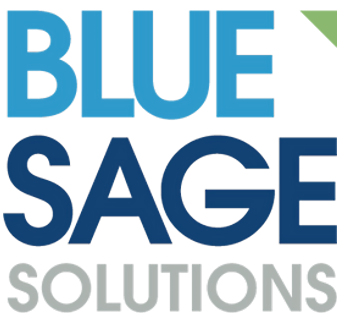Blog

Today’s Innovation Opportunity – And Why Lenders Must Embrace It

Steven Octaviano Blue Sage CTO
“All change is preceded by crisis,” 19th Century Danish philosopher Soren Kierkegaard once noted, and we are seeing plenty of evidence of this today. For better or worse, the COVID-19 crisis has either forced or inspired dramatic changes in how Americans live, work, shop and socialize.
As social distancing became the new normal, we have witnessed our own industry transition to working from home and Zoom meetings, as well as eClosings, remote online notarization technology and remote appraisals that leverage the assistance of homeowners. The technologies behind these changes have been with us for some time, but it took a crisis of mammoth proportions to accelerate adoption.
Yet there are other areas of the mortgage business still sorely in need of innovation. And if lenders hope to remain competitive and thrive when the smoke from the pandemic clears, they need to be embracing these innovations today.
Why More Innovation is Needed
Compared to the rest of the business world, the mortgage industry has traditionally been slow to embrace new innovations and technologies. In fact, it’s the main reason why originating and closing a mortgage loan remains so fragmented and labor-intensive. Because there has been so little motivation to change, outdated legacy technologies and manual processes remain deeply ingrained in the fabric of both banks and mortgage lenders.
Today, however, there is huge motivation to push forward. Over the last few months, the COVID-19 pandemic has forced every lender to alter their business models to accommodate people working from home and to conduct operations digitally, whether they previously had the tools in place to do so or not. If lenders hoped to remain relevant or simply to survive a tumultuous market, they really had no choice.
This isn’t the first time a major economic event has triggered rapid adoption of technology. The Great Recession in 2008 decimated many lenders and mortgage servicers, but it also spurred new innovations in mortgage technology that enabled lenders to access income and asset verification services online. Because of how suddenly and sharply the pandemic has affected today’s lending environment, however, today’s crisis is unique.
COVID-19 is accelerating the adoption of recent innovations. A year ago, for example, RONs had limited traction in the market. Over the past two months, RONs have emerged as the safest, most practical and most cost-efficient means of closing loans while abiding by social distancing rules. Since March, several states have pushed forward efforts to enable RONs to be used in real estate transactions. The appraisal industry and the GSEs have responded similarly, allowing homeowners to submit digital photos showing the condition of their homes instead of letting an appraiser in their home, which places both the appraiser and borrower at risk of spreading the coronavirus.
Still, when it comes to the entire loan manufacturing process, there is obviously a need to do much more. With most of the industry working remotely, the inefficiencies created by clinging to old practices, such as relying on manual document review and categorization (versus Automatic Document Recognition) and “stare and compare” processes (versus Optical Character Recognition based exception analysis), are more obvious than ever. In order to completely free themselves from the traditional process of reviewing loan files by hand—as well as the chaos that comes with the disjointed exchange of phone calls, faxes, and email—today’s lenders need something more. And that is end-to-end mortgage production technology.
How to Grasp the Opportunity
The good news about the current state of innovation is there are proven technologies available that can make lending more digital and transparent while also delivering a better borrower experience. It all begins with embracing modern technology that was built in a cloud environment and brings all the marketing, sales and production aspects of manufacturing loans into one place.
These new technologies can be used by all parties involved in the loan process, including the borrower. They are equipped with bidirectional interaction and integrated processes, and they provide a single source of truth for all borrower, loan and property data and calculations across all of a lender’s lines of business—whether consumer direct, retail, wholesale or correspondent.
It’s only been recently that these new mortgage production platforms have entered the market. They support agile development tools and cloud-based platforms such as Amazon, which allow lenders to leverage new features and capabilities as quickly as they can be developed, while seamless scaling to the current demands on their business.
But to take advantage of today’s innovations, lenders need to change their way of thinking. Traditionally, lender mortgage technology platforms were on-premise or hosted based on traditional platform models. A much better approach is to evaluate platforms based on their ability to operate in the cloud. Cloud-based platforms are able to provide response times in seconds, deliver enhancements to the business in days rather than months using agile development methodologies, and drive improvements in productivity across the entire mortgage process.
New technologies that utilize cloud-based services, automated rate and fee calculations, integrated data sources, workflow automation and machine learning, provide borrowers and lenders with a mobile-friendly approach to getting a mortgage. By effectively letting applicants experience an automated, intuitive application though either self-service or with the assistance of their loan officer, lenders can enhance the customer experience and improve efficiency.
New solutions built on modern technologies typically use an API-centric approach that take advantage of additional data sources to reduce approval and closing times considerably. By leveraging automation and automated tasking, lenders can further reduce manual effort, allowing them to mitigate errors and better leverage the talents of their staff to address exceptions and provide excellent customer service.
The future of mortgage production technology will be dominated by platforms that have been built with modern technology and include fully integrated pricing, automated fees and compliant document services. By transitioning from their legacy systems to these nimble cloud-based platforms, lenders will be able to immediately reduce risk, reduce cost and take advantage of new mobile technologies that will be necessary to compete in the years ahead.
To be sure, we have not seen the full impact of COVID-19 on our economy or our industry. However, by investing in new technologies, lenders can position themselves to realize growth, lower costs, improve the borrower experience, launch new innovations and expand into new markets more quickly. And there is no better time than now.


